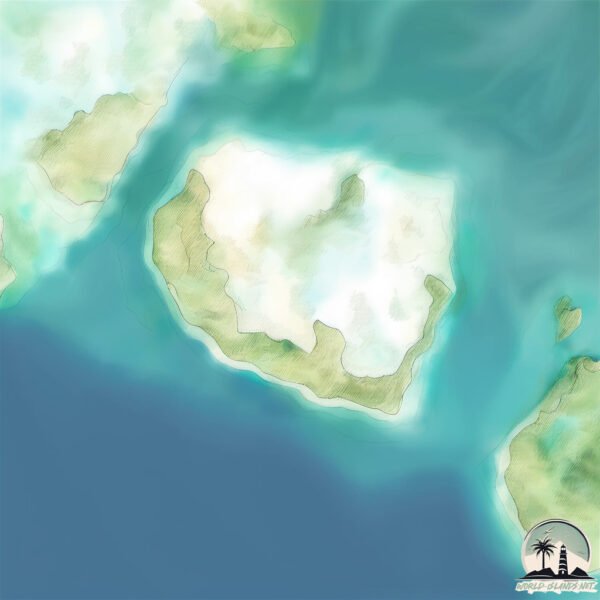Cayo Boca de Piedra Chiquita

Welcome to Cayo Boca de Piedra Chiquita, a Tropical island in the Caribbean Sea, part of the majestic Atlantic Ocean. This guide offers a comprehensive overview of what makes Cayo Boca de Piedra Chiquita unique – from its geography and climate to its population, infrastructure, and beyond. Dive into the details:
- Geography and Size: Explore the island’s size and location.
- Climate and Weather: Weather patterns and temperature.
- Topography and Nature: Uncover the natural wonders of the island.
- Infrastructure and Travelling: Insights on reaching, staying, and making the most of your visit.
- News and Headlines: Latest News.
Geography and size of Cayo Boca de Piedra Chiquita
Size: 0.894 km²
Coastline: 8.4 km
Ocean: Atlantic Ocean
Sea: Caribbean Sea
Continent: North America
Cayo Boca de Piedra Chiquita is a Tiny Island spanning 0.894 km² with a coastline of 8.4 km.
Archipel: Greater Antilles – A major island group in the Caribbean, including Cuba, Jamaica, Hispaniola, and Puerto Rico, known for their rich history and diverse cultures.
Tectonic Plate: North America – Covers North America and parts of the Atlantic and Arctic Oceans, characterized by diverse geological features and varying levels of seismic activity.
The geographic heart of the island is pinpointed at these coordinates:
Latitude: 20.76945201 / Longitude: -78.85200039
Climate and weather of Cayo Boca de Piedra Chiquita
Climate Zone: Tropical
Climate Details: Tropical Savanna, Wet
Temperature: Hot
Climate Characteristics: Defined by distinct wet and dry seasons with high temperatures year-round. Pronounced rainfall occurs during the wet season, while the dry season is marked by drought.
Topography and nature of Cayo Boca de Piedra Chiquita
Timezone: UTC-05:00
Timezone places: America/New_York
Max. Elevation: -5 m
Mean Elevation: -45 m
Vegetation: Mangrove Forest
Tree Coverage: 100%
The mean elevation is -45 m. Remarkably, this unique island barely emerges above the sea level, showcasing nature’s fascinating interplay with the ocean. The island is characterized by Plains: Flat, low-lying lands characterized by a maximum elevation of up to 200 meters. On islands, plains are typically coastal lowlands or central flat areas.
Dominating Vegetation: Mangrove Forest
Found in coastal areas and river deltas, these unique wetland ecosystems are adapted to saline conditions and are crucial for coastal protection and biodiversity. Cayo Boca de Piedra Chiquita has a tree cover of 100 %.
Vegetation: 2 vegetation zones – Low Diversity Island
Islands with two distinct vegetation zones offer slightly more ecological variety. These zones could be due to differences in elevation, moisture, or other environmental factors. While still limited in biodiversity, these islands may offer a contrast between the two zones, such as a coastline with mangroves and an inland area with grassland.
Infrastructure and Travelling to Cayo Boca de Piedra Chiquita
Does the island have a public airport? no.
There is no public and scheduled airport on Cayo Boca de Piedra Chiquita. The nearest airport is Ignacio Agramonte International Airport, located 132 km away.
Does the island have a major port? no.
There are no major ports on Cayo Boca de Piedra Chiquita. The closest major port is JUCARO, approximately 93 km away.
The mean population of Cayo Boca de Piedra Chiquita is 28 per km². Cayo Boca de Piedra Chiquita is Gently Populated. The island belongs to Cuba.
Continuing your journey, Cayo Mangle Alto is the next notable island, situated merely km away.
Cuba is classified as Emerging region: G20: Group of Twenty – Major economies comprising both developed and emerging countries, representing the world’s largest economies. The level of income is Upper middle income.
News – Latest Updates and Headlines from Cayo Boca de Piedra Chiquita
Stay informed with the most recent news and important headlines from Cayo Boca de Piedra Chiquita. Here’s a roundup of the latest developments.
Please note: The data used here has been primarily extracted from satellite readings. Deviations from exact values may occur, particularly regarding the height of elevations and population density. Land area and coastline measurements refer to average values at mean high tide.
